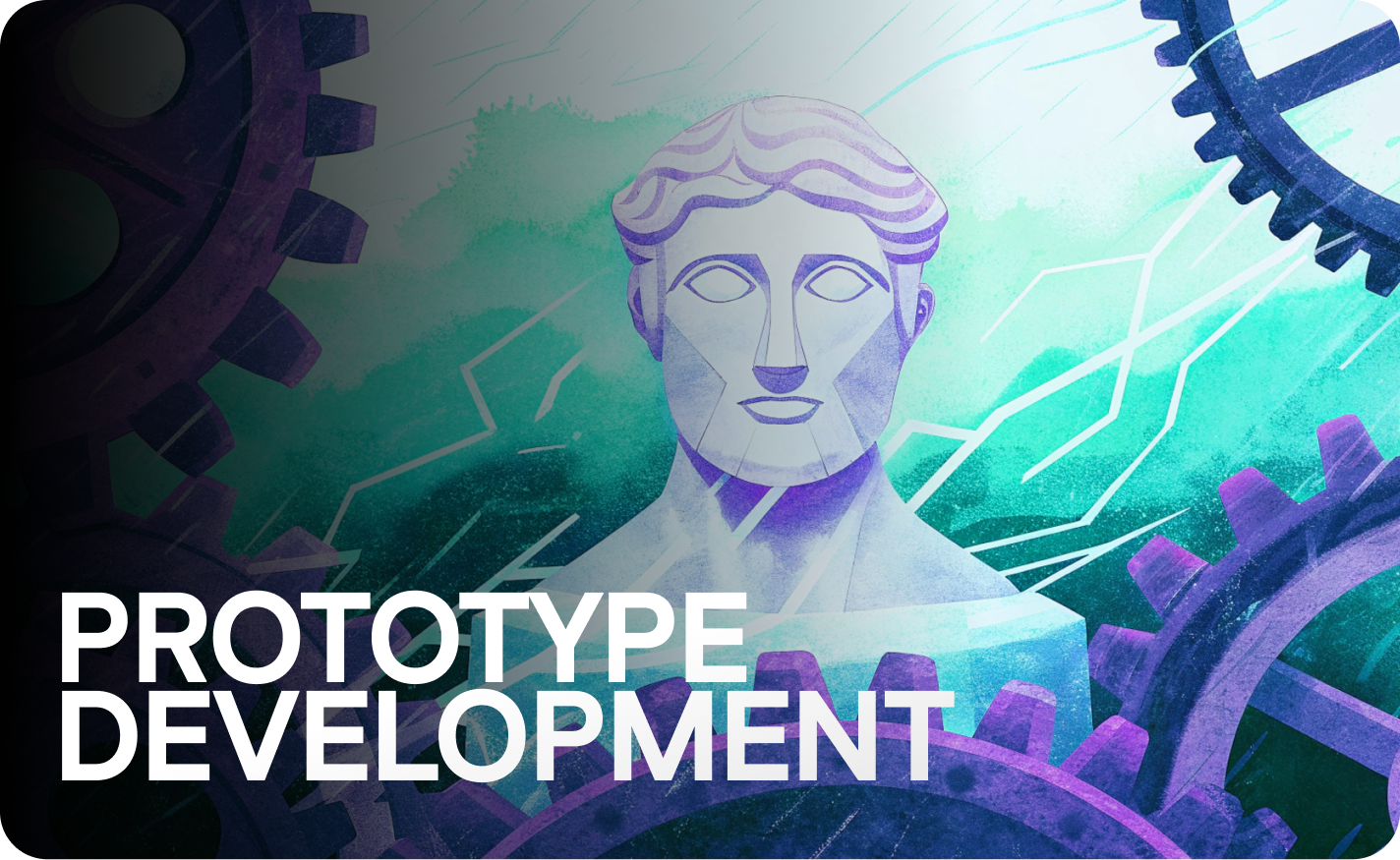10 Top Website Layouts: Examples You Can Copy & Learn From

Even the best web designers in the world often stand in front of this one problem:
“How do I make my client’s website stand out?”
Today, we’ll show you how. All thanks to our wonderful website layout design examples to inspire your next project.
Ready? Let’s jump right in.
What is a website layout?
A website layout refers to the arrangement and organization of various elements on a web page. It includes the positioning of text, images, buttons, navigation menus, and other content within the webpage’s overall structure. The layout is the visual representation of how the different components of a website are structured and presented to the user.
How to create powerful website layouts? Top tips
Designing game-changing website layouts takes a lot of time.
However, with our tips, you can optimize this process:
Understand your audience
Research your target audience to understand their needs, preferences, and behaviors. Tailor your layout to cater to their expectations and make it user-friendly.
Focus on clear navigation
Create intuitive and straightforward navigation. Make it easy for users to find what they need. Use clear menu structures and well-labeled buttons.
Prioritize visual hierarchy
Take advantage of visual hierarchy to guide users’ attention. Highlight important elements, such as call-to-action buttons, using size, color, and positioning.
Responsive design is a must
Make sure your layout is responsive and adapts seamlessly to different devices and screen sizes. Mobile users are increasing, so make sure they have a great experience too.
Whitespace is your friend
Utilize whitespace (negative space) strategically to create a clean and uncluttered layout. It will help you enhance readability and draw attention to key elements.
Consistency is key
Maintain consistency in design elements, such as fonts, colors, and buttons, throughout the website. Consistency fosters familiarity and improves the overall user experience.
A/B test and iterate
Continuously test different layout elements using A/B testing. Analyze user behavior and feedback to make data-driven improvements over time.
Top website layout examples
Now that you know how to create amazing website layouts, let’s inspire you with real life examples:
Single column layout
A simple and clean layout where all content is presented in a single vertical column. This design is often used for blogs, portfolios, and landing pages. It prioritizes readability and easy navigation.
Pros:
- readable and easy to navigate, as all content is presented in a linear format
- works well for mobile responsiveness since content naturally adapts to smaller screens
- provides a focused and straightforward user experience
Cons:
- limited visual complexity and might not be suitable for content-heavy websites
- may require more scrolling if there’s a lot of content
- less flexibility in organizing content compared to multi-column layouts
Use cases:
- blogs and articles where readability is essential
- portfolios to showcase creative work in a simple and elegant manner
- landing pages for targeted promotions or product launches

Grid based layout
Websites with grid-based layouts arrange content and images into a consistent grid structure. This design is visually appealing and effective for showcasing products or portfolios. It allows for a balanced distribution of content across the page.
Pros:
- allows for visually appealing and organized content presentation
- facilitates easy comparison between different items in the grid
- great for displaying a collection of products or images
Cons:
- can be challenging to maintain a consistent look with varying content sizes
- might not be the best choice for content-heavy websites with a lot of text
- less suitable for long-form storytelling
Use cases:
- portfolio websites for artists, photographers, or designers
- e-commerce websites to showcase products with images and brief descriptions
- image galleries and creative portfolios

Hero image header layout
This layout features a large, eye-catching image or video at the top of the page (hero section). The hero section is often accompanied by a headline and a call-to-action, immediately capturing visitors’ attention.
Pros:
- grabs visitors’ attention immediately with a visually captivating hero section
- strong call-to-action placement can drive user engagement
- ideal for promoting a specific product or service
Cons:
- might slow down page loading times if the image/video is large
- can be challenging to balance the hero section’s size with other content
- content below the fold might get less initial attention
Use cases:
- landing pages for marketing campaigns or product launches
- event websites to highlight important information and registration details
- websites that prioritize visual storytelling

Card-based layout
Popularized by platforms like Pinterest, card-based layouts use modular content blocks, or “cards,” that present individual pieces of content, such as articles, images, or products. Cards can be rearranged dynamically based on user interactions.
Pros:
- allows for modular content presentation and dynamic rearrangement
- encourages user engagement with interactive and clickable cards
- provides a clean and organized look for content-heavy websites
Cons:
- may not be suitable for long-form content like articles or blog posts
- too many cards can result in clutter if not well-organized
- not ideal for conveying a linear narrative
Use cases:
- social media platforms that display user-generated content
- e-commerce websites to showcase products with brief descriptions
- portfolio websites to present various projects or case studies

Split-screen layout
In this layout, the screen is divided into two or more sections, each displaying different content. It’s useful for showcasing contrasting elements or presenting a before-and-after scenario.
Pros:
- creates a visually striking and modern design aesthetic
- allows for presenting contrasting elements side by side
- can tell a story effectively through visual juxtaposition
Cons:
- content might not be as visible on smaller screens or mobile devices
- requires careful design and balance to ensure a seamless experience
- not suitable for all types of websites or content
Use cases:
- before-and-after scenarios for home improvement or product comparisons
- websites aiming to showcase two different products or services equally
- creative agency websites to display their work and approach

Long-scrolling Layout
Long-scrolling layouts eliminate the need for multiple pages by placing all content on one long page. This approach is ideal for storytelling, as users can scroll through sections seamlessly.
Pros:
- enables seamless storytelling and continuous content flow
- reduces the need for multiple page loads, improving user experience
- allows for creative, engaging visuals and animations
Cons:
- navigation might become challenging if the menu is not easily accessible
- users might miss some content if they don’t scroll far enough
- performance issues can occur with extensive content and media
Use cases:
- landing pages for products or services that need detailed explanations
- storytelling websites for interactive narratives or immersive experiences
- single-page websites for events or temporary promotions

Magazine Layout
This layout resembles a traditional magazine, with a mix of large visuals, headlines, and snippets of content organized in columns. It’s well-suited for content-heavy websites and online publications.
Pros:
- ideal for content-heavy websites with a lot of articles or blog posts
- provides a structured and organized presentation of content
- allows for highlighting featured articles or posts
Cons:
- can be overwhelming if not well-organized and visually balanced
- might not be the best choice for websites with fewer articles or content
- requires careful attention to typography and layout to maintain readability
Use cases:
- online magazines and news websites
- content-rich blogs with various categories and topics
- websites that prioritize content discovery and exploration

Fixed Sidebar Layout
A fixed sidebar layout keeps the navigation menu or other essential elements fixed as users scroll down the page. This ensures easy access to key features throughout the browsing experience.
Pros:
- ensures easy access to important navigation elements throughout the page
- helps users maintain context and orientation as they scroll
- works well for web pages with a lot of content and sections
Cons:
- can reduce the available screen space for content on smaller screens
- might cause visual clutter if not designed and positioned properly
- requires extra consideration for mobile responsiveness
Use Cases:
- information-heavy websites with multiple sections and subpages
- corporate websites with comprehensive menus and navigation options
- websites with complex navigation and features.

Full Screen Photo Layout
This layout uses a fullscreen image or video as the background, creating a visually striking and immersive experience.
Pros:
- creates a visually stunning and immersive user experience
- grabs immediate attention and leaves a lasting impression - great focal point
- ideal for websites that rely heavily on visual storytelling
Cons:
- large media files can slow down page loading times
- text readability might be compromised over busy backgrounds
- not suitable for all types of content or websites
Use cases:
- creative portfolios for artists, photographers, or videographers
- event websites aiming to create an impactful first impression
- landing pages for products or services that rely on strong visuals

Minimalist Layout
A minimalist design focuses on simplicity, using ample white space, clean typography, and limited color schemes. It helps highlight the most crucial elements and maintain a clutter-free appearance.
pros:
- emphasizes essential elements and reduces distractions
- provides a clean and modern design aesthetic
- ensures a faster loading time and better performance
Cons:
- might lack visual interest for certain types of websites
- requires careful attention to typography and whitespace to maintain readability
- less suitable for websites that need to convey a lot of information
Use Cases:
- personal portfolios for creatives who want to showcase their work front and center
- SaaS (Software as a Service) websites aiming for a modern, streamlined look
- brand websites that emphasize simplicity and elegance

Other layouts worth mentioning: single page layout, asymmetrical layout, featured image layout, fixed header layout, infinite scroll layout, sticky elements layout, tabbed content layout.
Boost your website layout with LiveSession

When it comes to boosting your own website layout, there is undoubtedly no better solution than LiveSession.
This exceptional platform offers a comprehensive set of tools and features that can transform your website’s performance and user experience like never before.
Here’s how we can help you:

By using session replay, LiveSession lets you watch actual user interactions to identify pain points and usability issues. It guides data-driven design decisions for a good website layout.
The event-based product analytics help track user actions, optimizing your layout to navigate visitors towards key conversion points effectively.
With seamless integration of data from various tools like Google Analytics and more, LiveSession provides a comprehensive view of your website’s performance. As such, it ensures a user-focused design based on real data.
Click & heat maps visually display user interactions, optimizing your layout for attention-grabbing content and improved navigation.
Testimonials from satisfied customers in different industries confirm LiveSession’s exceptional capabilities for continuous improvement and user-friendliness.
What’s more, privacy is a top priority, as we offer full control over recorded data, ensuring GDPR and CCPA compliance.
Let us empower you to create a visually appealing, engaging web page layout that drives higher conversions and enhances the overall user experience.
Sign up for a free trial today and experience the transformative impact of LiveSession on your website.
Final words
As Trish Parr once said, “if you think math is hard, try web design”.
We hope that we proved this claim wrong.
The layout aspect of web design doesn’t have to be challenging.
You just need a backup of useful examples for time of reduced creativity.
Good luck!
P.S. And to further boost your layouts, use LiveSession.
Related articles
Get Started for Free
Join thousands of product people, building products with a sleek combination of qualitative and quantitative data.




